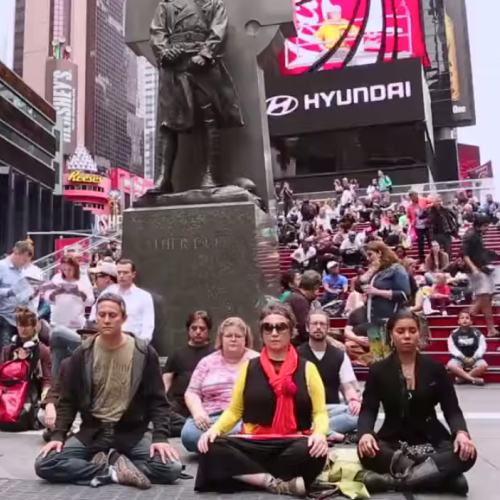While mindfulness practice can be done just about anytime or anywhere, the bulk of most people’s meditation practice is usually done at home.
Often when people begin to meditate, they have preconceptions about what meditation “should” be—quiet, solitary, peaceful, relaxing. But while the practice can be all those things, it is also about not shying away from things that feel uncomfortable, painful, difficult or distracting.
Distraction is a big challenge to sitting mindfulness meditation.
Your mind will run rampant thinking about the past—like a conversation you had earlier or the movie you saw last night. And it will become anxious about the future too—all the work you have to do when you are done sitting and oh shoot, I forgot to send that email and put that item on my to do list. When I am done meditating, I will have to remember to call that person, and so on. The issue with all these internal distractions is that they take our awareness away from the now.
Then there are external distractions too––maybe your phone rings or your computer chimes and notifies you of a new email. Maybe you are sitting facing a window and car passes or a squirrel runs by. Maybe you hear a neighbor’s conversation, and maybe you sit there and struggle with the urge to answer that phone, check that email, watch that squirrel or focus in on that conversation.
The issue is not in the awareness of the things going on around you or inside you. In fact, it is exactly that present awareness of both the world around us and the thoughts running through our minds that we are working to cultivate.
The problem arises when we latch on to a train of thought and let it carry us away from our experience the present. If you have ever missed your subway stop or your exit on the highway because you were lost in deep thought about something, you know exactly what it means to be distracted from the present.
With such active lives, minds and the worries that accompany them, it’s natural to want to seek out that quiet, personal space for our meditation. But when we step back for a moment and look at the purpose of our practice, we realize that the relaxed mindful awareness that comes with sitting is not meant to be the exclusive domain of the meditation cushion, but is actually meant to be brought with us out into the world and into our daily lives.
Developing mindfulness and the compassion that accompanies it in a vacuum is not the goal. Bringing that mind set—that awareness with us as we shop for groceries, work or interact with a partner, or our parents, or children or a complete stranger—that is the goal.
Buddhist writer, Pema Chodron has a great saying: “lean in to the sharp points of life.”
What she means by that is rather than shying away from the things that we find painful or make us uncomfortable, turn and face those discomforts, anxieties and sadness and examine them, make friends with them. Accept things that are—good or bad—for how they are without trying to change them or running from them. Much in the same way, when we meditate in a public forum, we are choosing to lean into the distractions of life.
Meditating in public—in the middle of a lot of activity—is good precisely because it is more challenging.
Meditate in a public space, and you will be inundated with sights sounds and smells. Cars driving by or honking their horns, billboards and street lights, music, laughter, shouting, garbage, body odor, animals, the elements, you name it. Add to that, any insecurities and self consciousness you may feel meditating in public and you have the makings of a perfect storm of distractions and opportunities to get lost in thought, missing out on the present.
But that same perfect storm of obstacles and distractions provides you with a fantastic opportunity to grow. The nervousness you feel, when gently examined, is actually pointing you toward getting to know yourself better. When you notice your reactions to the sights and sounds and feelings of your experience, you are noticing you as much as you are noticing the things around you. And as you start to relax into the present, you may start to feel a little less anxious, and a little more connected to everything that is going on around you however crazy busy it may seem at first. And as you start to feel a little more connected to the world around you, you just might start to appreciate and maybe even enjoy that experience.
Your reactions to the experience you are having are actually just sign posts pointing in the direction of you. Just follow the signs. Try sitting in publc and see what comes up.
Here is a video of a public meditation in Times Square., put on by thesittingproject.org.
Relephant read:
To meditate or not to meditate in a noisy city.
Author: C.T. Tamura
Editor: Catherine Monkman
Photo: Author’s Own











Read 1 comment and reply